Laser Hair Removal in Belgium
Search and Compare the Best Clinics and Doctors at the Lowest Prices for Laser Hair Removal in Belgium
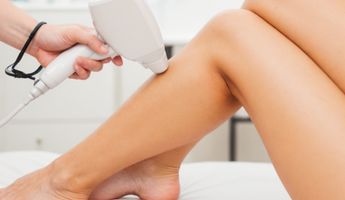
Find the best clinics for Laser Hair Removal in Belgium
No pricing info available
India offers the best prices Worldwide
Price: $ 3
From 2 verified reviews
Vicky Kermans, 02 September 2020
Friendly, professional and good advice. Very satisfied!
Dermato-Cosmetic Clinic and Laser - Ave Charles, located in Lindendreef, Antwerp, Belgium offers patients Laser Hair Removal procedures among its total of 15 available procedures, across 2 different specialties. Currently, there's no pricing information for Laser Hair Removal procedures at Dermato-Cosmetic Clinic and Laser - Ave Charles, as all prices are available on request only. All procedures and treatments are undertaken by the lead specialist at the Clinic, and they have multiple recognized accreditations, including: Ziekenhuiswet / La loi sur les hôpitauxIntegral quality of care in care facilities
- Home
- Belgium
Compare Before & After Photos of _procedure_photos.phpLaser Hair Removal

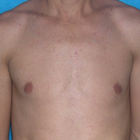
Front view
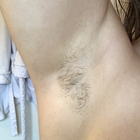
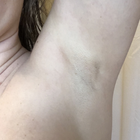
Front view
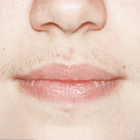
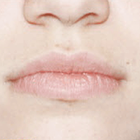
Front view
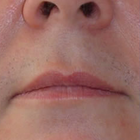
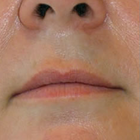
Front view
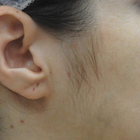
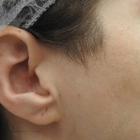
Half-side view

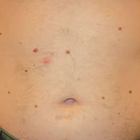
Front view
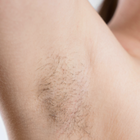

Front view
WHY US?
At Medijump, we're making medical easy. You can search, compare, discuss, and book your medical all in one place. We open the door to the best medical providers worldwide, saving you time and energy along the way, and it's all for FREE, no hidden fees, and no price markups guaranteed. So what are you waiting for?

Free

Best Price

Widest Selection

Risk-Free
What you need to know about Laser Hair Removal in Belgium
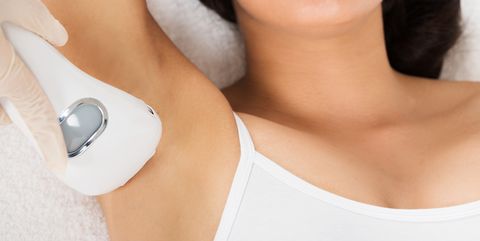
Gone are the days of having to constantly shave, pluck or wax unwanted hair from your body. We all know how very time consuming these things are, not to mention the pain you have to endure when you pluck or wax your unwanted hair.
Today, we have several options we can choose from before we can bid goodbye to such undesirable body hair. One of the more popular hairs removal procedures is Laser hair removal. The process involves targeting the hair follicles with laser light in order to damage them and prevent any future hair growth. In this, laser energy gets absorbed by the hair pigment, resulting in damage to the hair follicle. Such a procedure prevents hair growth in the future, and the effect could be permanent in many cases.
Laser hair removal can be done in any part of your body. The most common areas include the bikini area, underarms, legs, back, and face.
What is the cost of Laser Hair Removal in Belgium?
The expenditure for a Laser Hair Removal within Belgium can vary greatly on the basis of numerous aspects. The cost is typically dictated by the expanse of the area undergoing treatment; processes carried out on larger surfaces such as the back or legs could be pricier than those on smaller zones like the upper lip. Other influencing factors include the type of laser technology applied, the count of required sessions, and the credibility and expertise of the clinic or professional administering the treatment.
Considering the wide spectrum of prices across different treatment providers, it's immensely advantageous to undertake comprehensive research and consultations prior to selecting a specific clinic. Some clinics may present package deals for multiple sessions, which could be more economically viable compared to paying for each session separately.
Bear in mind that despite the initial high cost of laser hair removal seeming daunting, the long-term benefits frequently render it a cost-efficient resolution. When you contemplate the ongoing costs of other hair removal options like waxing, shaving, or depilatory creams accumulated over a lifetime, laser hair removal can actually save you both time and money in the grand scheme.
What does a Laser Hair Removal Procedure Involve?
During the procedure, your doctor will press a hand-held laser instrument to the skin area where your unwanted hair is. The laser equipment will be adjusted according to the color, thickness, and location of your hair as well as your skin color. Depending on the laser used, you will be asked to wear eye protection to protect your eyes from the laser beam. A cooling gel or a special cooling device will also be used to protect the outer layers of your skin and lessen the risk of side effects. Your doctor might also apply topical anesthetic to your skin to reduce your discomfort.
Your doctor will then activate the laser; the beam will pass through your skin and to your hair follicles. The heat from the laser beam will now damage the hair follicles; as a result, it will prevent hair growth. You might feel a slight discomfort like a warm pinprick but it will be soothed by the cooling gel or device.
How Long Should I Stay in Belgium for a Laser Hair Removal Procedure?
Laser hair removal is done in small areas of your body like your upper lip usually lasts for only a few minutes. In larger areas such as your back, it might take an hour or more. After your procedure has been completed, you will be given ice packs, anti-inflammatory cream or cold water to ease your discomfort. You can go home right after you have undergone the treatment. Furthermore, stitches are not required in this procedure. You may need to schedule multiple sessions, usually 4-6, spaced four to six weeks apart for optimal results.
What's the Recovery Time for Laser Hair Removal Procedures?
Recovery time after a Laser Hair Removal is typically minimal. Minor redness and swelling may occur but usually resolve within a few hours to a few days. According to health experts, it's essential to avoid sun exposure and use sunscreen to protect the treated area during the recovery period, as skin can be particularly sensitive after treatment. For the first two days, it may seem like the treated area was sunburned. Applying a cool compress and moisturizer will help you with your discomfort. If your face was treated, you will not be allowed to wear makeup if your skin is blistering.
It usually takes 2 to 3 weeks to see any difference. You may schedule your next treatment after 4 or 6 weeks. Note that you need to continuously undergo the treatment until your hair stops growing; this may take 8 to 12 treatments before acquiring full results.
What sort of Aftercare is Required for Laser Hair Removal Procedures?
The heat from the laser will stay in your skin for 24 hours so you need to avoid the gym, sauna, or even taking a hot shower. Doing so will increase the risk of bacteria multiplying and giving you spots. Strictly avoiding the sun before and after your procedure is essential, it is also recommended for you to avoid chemical peels for 2 weeks after your procedure. Applying ice packs to the treated area can also reduce swelling or discomfort.
What's the Success Rate of Laser Hair Removal Procedures?
A Laser Hair Removal technique often has a high success rate, with many people reporting a considerable reduction or full eradication of unwanted hair growth. The patient's skin type, hair colour, and the particular body part being treated are all important variables that can affect how well the operation works. For instance, the technique usually works best on those who have dark hair and pale complexion since this allows for optimal targeting of hair follicles.
Additionally, the Laser Hair Removal's success rate is highly impacted by the practitioner's training and experience. Up to 90% of individuals who undergo the operation under the expert guidance of a qualified specialist will experience a permanent hair reduction. It's always best to consult with a qualified professional at a trusted clinic for personalized advice on the expected outcomes and success rate of laser hair removal for your specific circumstances.
Are there Alternatives to Laser Hair Removal Procedures?
If for any reason, you deem the Laser Hair Removal unfitting, there are alternate routes worth your consideration. These include standard techniques like shaving, waxing, and tweezing, which can be effortlessly performed at home. However, be aware that these options may not ensure enduring solutions to undesired hair growth.
That's where professional treatment alternatives make their entrance. Electrolysis, a process that involves a very slender needle infiltrating each hair follicle to obliterate it using an electrical charge, is one such course of action. Though electrolysis could be more labor-intensive than laser hair removal, it has earned a reputation for its efficacy on all varieties of skin and hair.
Furthermore, there exist depilatory creams designed to chemically disintegrate hair at the surface level of the skin. The outcomes of these creams usually extend beyond the typical duration of shaving effects, but they necessitate routine application. As for any novel skin product, conducting a patch test 24 hours before usage to check for allergic reaction is invariably advised.
Lastly, there's IPL (Intense Pulsed Light) that, despite bearing resemblance to laser hair removal, employs a broad spectrum of high-intensity light influencing the deeper structures of the skin. IPL can additionally serve the purpose of treating skin pigmentation issues as well as acne.
Determining the choice among these alternatives will depend on your specific requirements, lifestyle, and financial plan. It's also vital to discuss your prospective options with a healthcare specialist before settling on a final verdict. They are equipped to dispense comprehensive information and counsel, personalized to your distinct circumstances.
How should you prepare for the Laser Hair Removal Procedure?
Completely getting rid of undesirable hair in certain areas of your body can be quite rewarding and it can certainly boost your self-esteem. Laser hair removal eventually eliminates the need for plucking, shaving or waxing. The common body area where this treatment procedure is done includes armpits, bikini line, upper lip, and legs. Although this treatment procedure is possible in almost all parts of the body, the eyelid area is one exemption.
In choosing the right doctor for your procedure, you have to take note of the following:
- A doctor who specializes in dermatology or cosmetic surgery and has experience with laser hair removal.
- If a physician assistant or a licensed nurse will execute the procedure, make sure that your doctor is available on-site for supervision.
Before your actual treatment procedure, you have to schedule a consultation with your chosen doctor. During your consultation, costs, expected results, and possible risks will be discussed with you. Furthermore, your doctor will also review your medical history and determine whether this procedure is the appropriate treatment for you. You may also be advised to do the following before your scheduled day:
- Avoid sun exposure, typically 6 weeks before your treatment and use sunscreen daily.
- Lighten your skin. Your doctor might also prescribe a skin bleaching cream to lighten your skin if you have a darker skin complexion.
- Avoid plucking, waxing electrolysis 4 weeks before your treatment. These other methods of hair removal might disturb your hair follicle.
- Avoid blood-thinning medications like aspirin or anti-inflammatory drugs.
- Shaving and trimming are recommended a day before your treatment procedure. It gets rid of the hair above the skin that can be burned but at the same time, it leaves the hair shaft intact below the surface.
What are the Potential Risks of Laser Hair Removal?
On the rare occasion, a few individuals could encounter minor side effects like skin irritation and changes in pigment. Skin irritation may present as temporary discomfort, redness and swelling at the site of treatment, generally fading away within hours post procedure. Changes in skin pigmentation could involve skin darkening or lightening. These changes are usually temporary but may turn permanent in rare instances.
Moreover, infrequent but severe risks encompass blistering, scarring, alterations in the skin texture, graying of hair in the treated area, and an unusual surge in hair growth surrounding the treated regions. Keep in mind that these risks more likly escalate if the procedure is conducted by an untrained or novice provider or if post-treatment care guidelines are not adhered to rigorously. For instance, sun exposure weeks leading up to and post treatment can amplify the probability of skin lightening.
Whilst the information presented here has been accurately sourced and verified by a medical professional for its accuracy, it is still advised to consult with your doctor before pursuing a medical treatment at one of the listed medical providers
No Time?
Tell us what you're looking for and we'll reachout to the top clinics all at once
Enquire Now

Popular Procedures in Belgium
Prices Start From $1

Prices Start From $5

Prices Start From $16

Prices Start From $5

Recommended Medical Centers in Belgium for Laser Hair Removal

- Interpreter services
- Translation service
- Religious facilities
- Medical records transfer
- Medical travel insurance
- Health insurance coordination
- TV in the room
- Safe in the room
- Phone in the room
- Private rooms for patients available

- Interpreter services
- Translation service
- Religious facilities
- Medical records transfer
- Medical travel insurance
- Health insurance coordination
- TV in the room
- Safe in the room
- Phone in the room
- Private rooms for patients available

- Interpreter services
- Translation service
- Religious facilities
- Medical records transfer
- Medical travel insurance
- Health insurance coordination
- TV in the room
- Safe in the room
- Phone in the room
- Private rooms for patients available
Laser Hair Removal in and around Belgium
Belgium is one of the smallest and most densely populated countries in Europe and has some of Europe’s finest cuisine, including the creamiest chocolates and a wide variation of beers. In addition, it is home to extensive beaches, postcard-worthy dunes, historic cities, and beautiful countryside, with belfries, castles, and carnivals. Belgium has enjoyed a growing reputation for being excellent medical tourism as well as the country boasts immaculate clinical standards. The medical centers in the country offer a wide range of specializes treatments, short waiting time, highly-trained medical professionals, and considerably lower medical costs. Orthopedics and heart surgery are the most sought after procedures in Belgium.
Popular Parts of Belgium
Brussels is the capital of Belgium, as well as home to European Union official seats and NATO headquarters. Here, visitors can see Europe’s grandest squares, visit the beloved statue of a little boy peeing into a basin (Manneken Pis), explore Musées Royaux des Beaux-Arts, and admire the magnificent Grand Palace. Bruges, a pickled Gothic city, is also worth a visit. The key attractions in the city are the 14th-century town hall, the Cathedral of the Holy Savior, and the Belfry Tower. Other popular cities include Antwerp and Ghent. While Antwerp is famous for its fashion and excellent museums, Ghent is best known for its historic quarter and stunning Van Eyck altarpiece in its colossal cathedral.
Weather and Climate in Belgium
Belgium has four distinct seasons. Summer in the country is relatively short, starting in July and ending in August. The season is warm, with bearable heat and some intermittent rain. Winter comes in November and extends until March. It can get rather wet and chilly during this season, with an average temperature of around 3 - 7°C. Spring (April – June) and autumn (September – October) are generally nice and warm, with an average temperature of around 10 - 15°C.
Getting around in Belgium
The main international airport in Belgium is Brussels Airport. It serves flights to many major cities around the world, including Copenhagen, Doha, London, New York, Atlanta, Casablanca, and Bangkok. Since Belgium is a small country, there are no domestic flights. The public transport system in the country is extremely well-organized and reasonably priced. The best way to get around the country is by train. The trains are affordable, fast, frequent, very punctual, and have a comprehensive network of lines. Buses tend to be used in conjunction with train services, so you will likely need a train-bus combination when traveling, especially to rural areas. Inside cities, the transport systems are centered on buses, but there are also metro and trams in Brussels and Antwerp. Taxis are plentiful in all cities and ensure to hire metered official taxis, which have standard fares.
Tourist Visas in Belgium
Belgium is part of the Schengen Area, so nationals of EU/EEA countries do not need a visa to visit the country regardless of their length of stay or purpose of travels. Citizens of 62 countries, including Canadian, Australian, and US nationals, can stay in the country without a visa for up to 90 days. Belgium Visa for Medical reasons is available for people who need to obtain medical care in the country.
Additional Information
- Local Currency: Belgium adopted the euro (€) in 2002. The exchange rate from US$1 is around €0.85 (€1 is around US$1.17).
- Money & Payments: All towns and cities have cashpoints that are compatible with international banking networks. Credit Cards, particularly MasterCard and Visa, are widely accepted in major cities and towns. Always have some cash on you when traveling to smaller villages. Tipping is not standard practice but appreciated.
- Local Language: Dutch, German, and French are the official languages in Belgium. English is widely spoken.
- Local Culture and Religion: About 65% of the population is Christian, with a large portion adhere to Roman Catholicism. There are also some small communities of Jewish, Muslim, and Buddhist.
- Public holidays: Some important public holidays in Belgium include New Year’s Day, Easter Monday, Ascension Day, Whit Monday, Independence Day, and Christmas Day.
Popular Searches
- Plastic Surgery in Thailand
- Dental Implants in Thailand
- Hair Transplant in Thailand
- Breast Augmentation Thailand
- Gastric Sleeve in Thailand
- Gender Reassignment Surgery in Thailand
- Laser Hair Removal in Bangkok
- Botox in Bangkok
- Dermatology in Bangkok
- Breast Augmentation in Bangkok
- Coolsculpting in Bangkok
- Veneers in Turkey
- Hair Transplant in Turkey
- Rhinoplasty in Turkey
- Stem Cell Therapy in Mexico
- Rhinoplasty in Mexico
- Liposuction in Mexico
- Coolsculpting in Tijuana
- Rhinoplasty in Korea
- Scar Removal in Korea
- Gastric Sleeve in Turkey
- Bone Marrow Transplant in India
- Invisalign in Malaysia
- Plastic Surgery in the Dominican Republic
- Tummy Tuck in the Dominican Republic
- Plastic and Cosmetic Surgery in Poland
- Rhinoplasty in Poland
- Hair Implant in Poland
- Dental Implants in Poland
- IVF in Turkey

